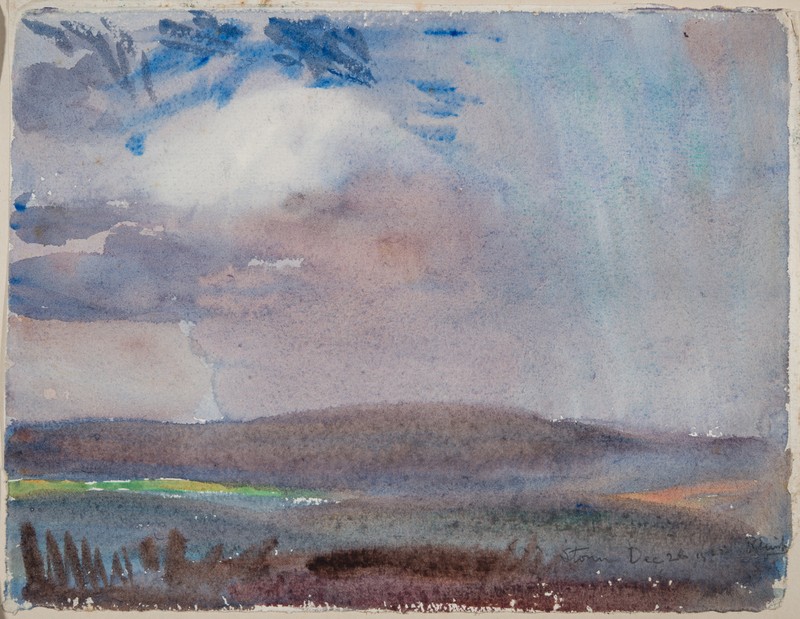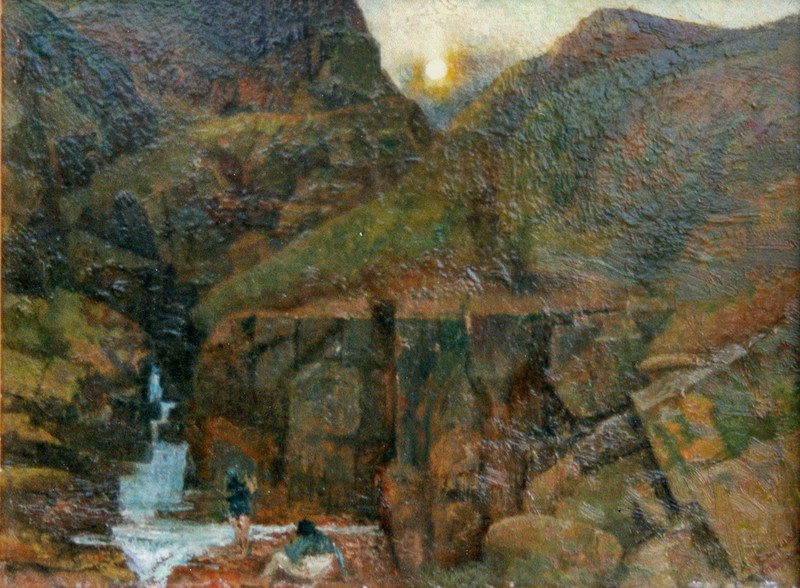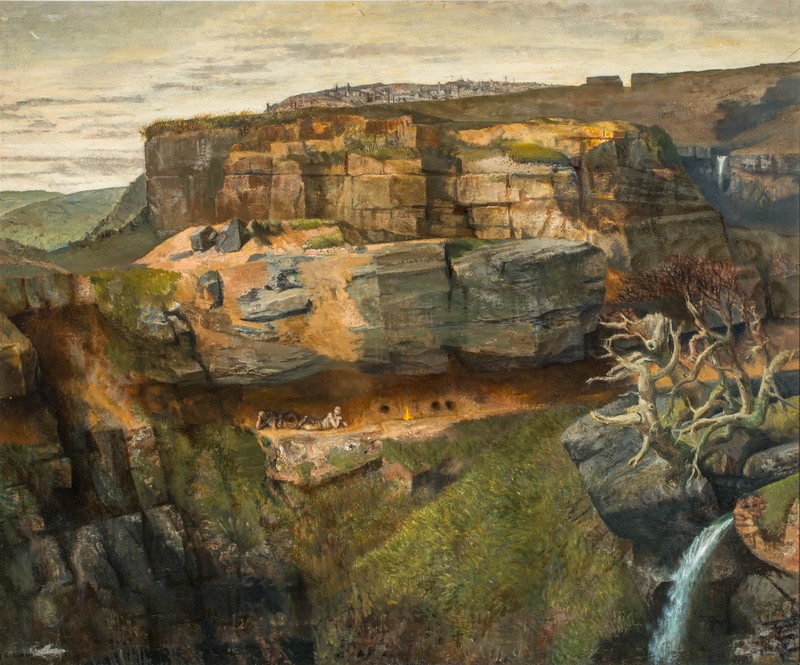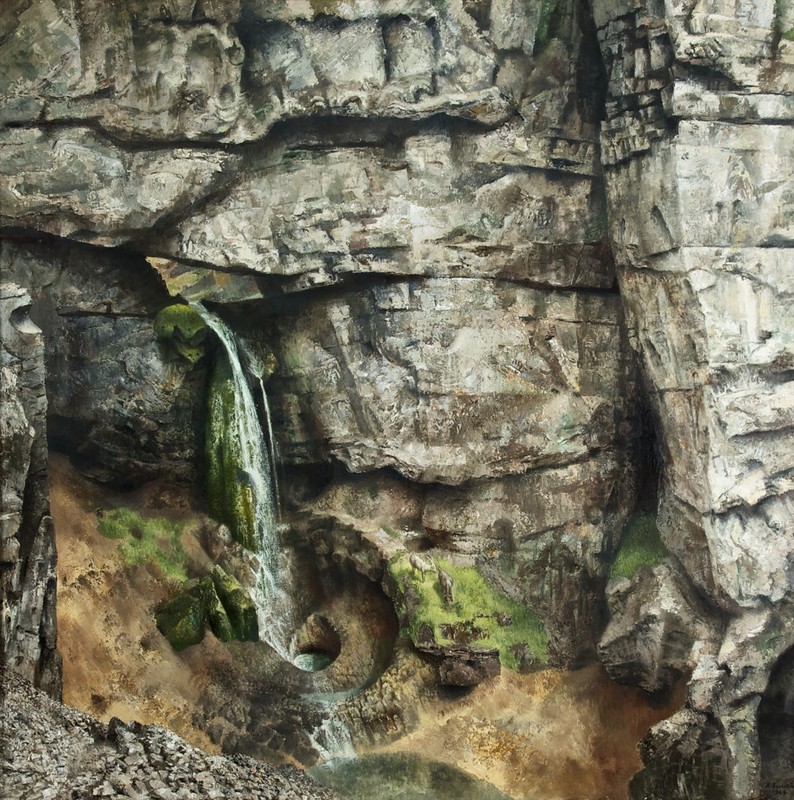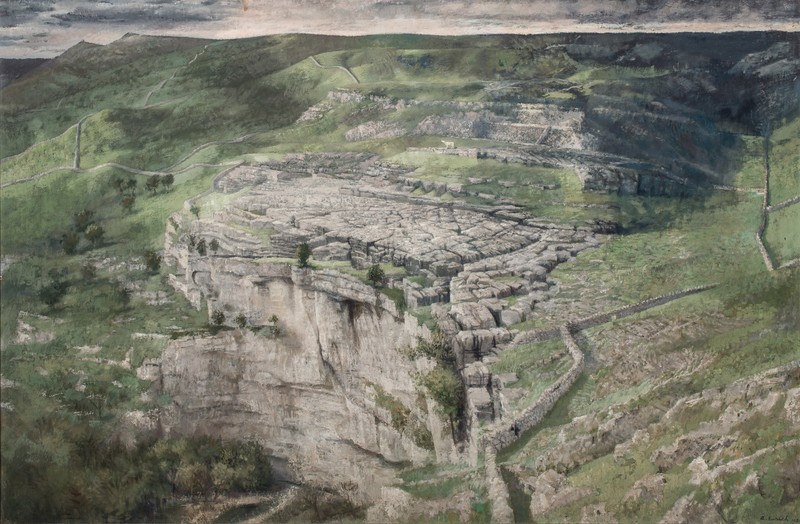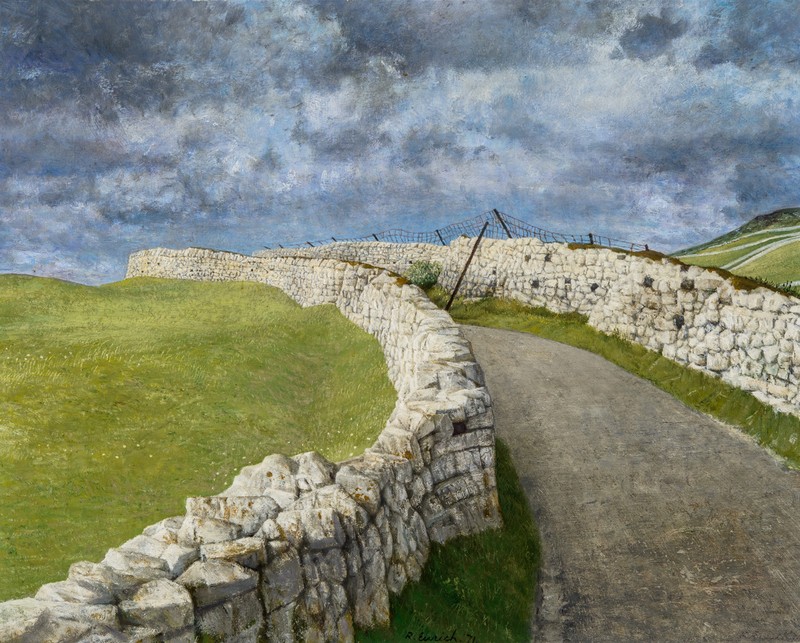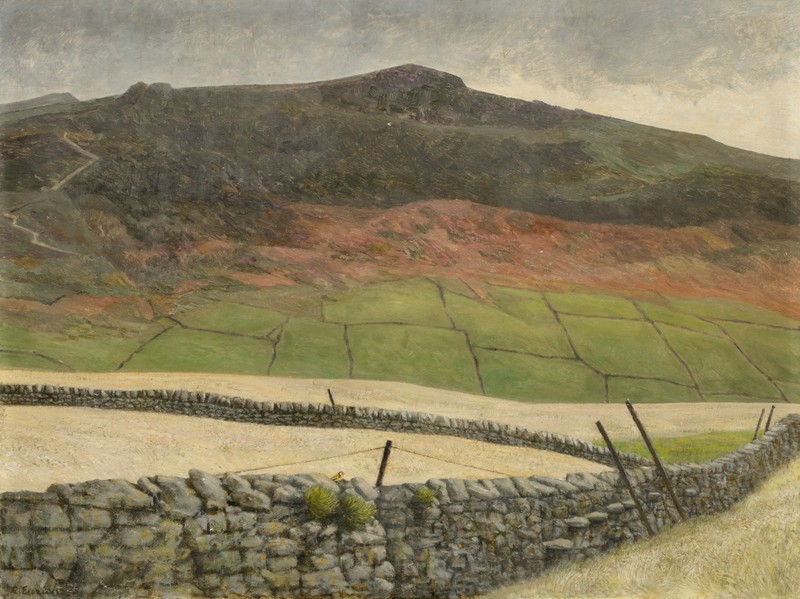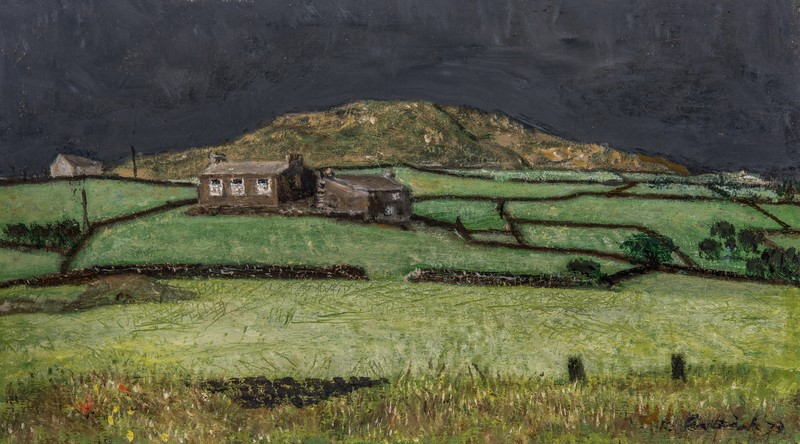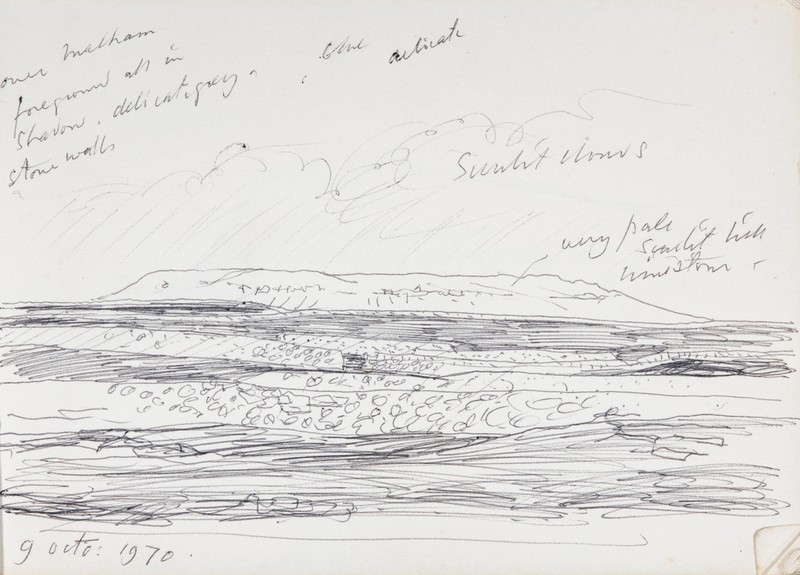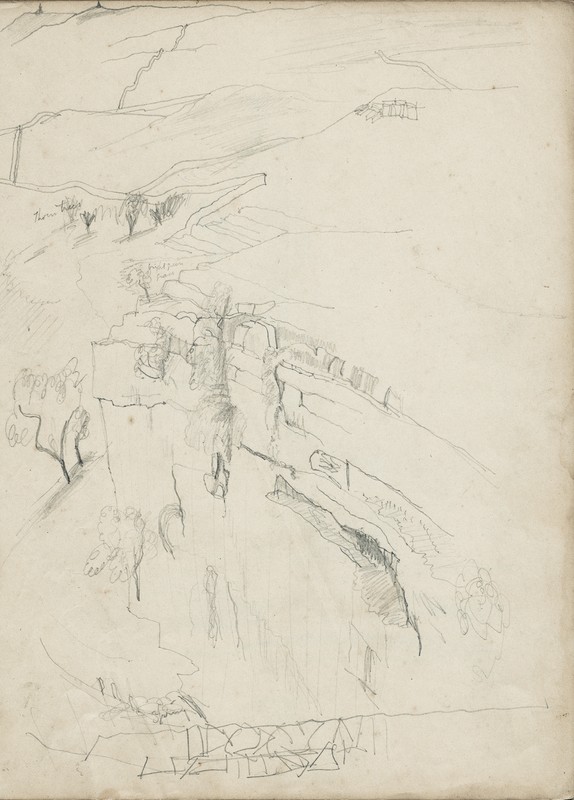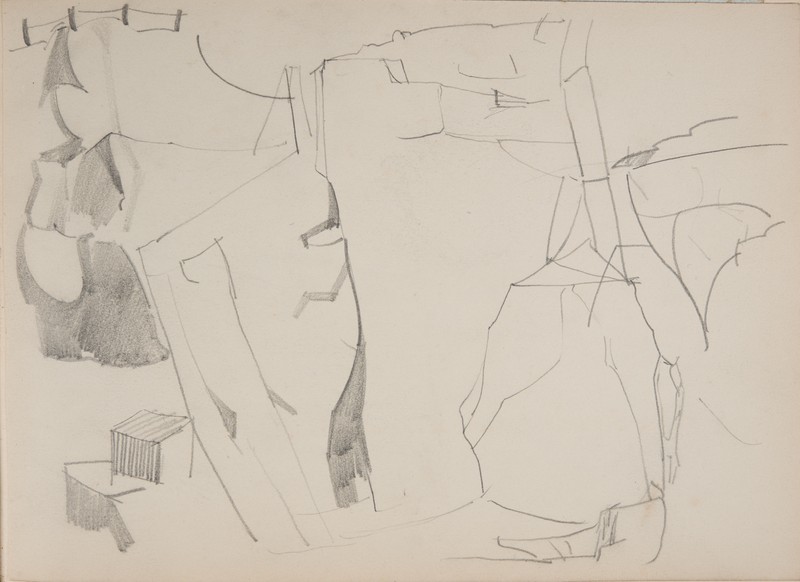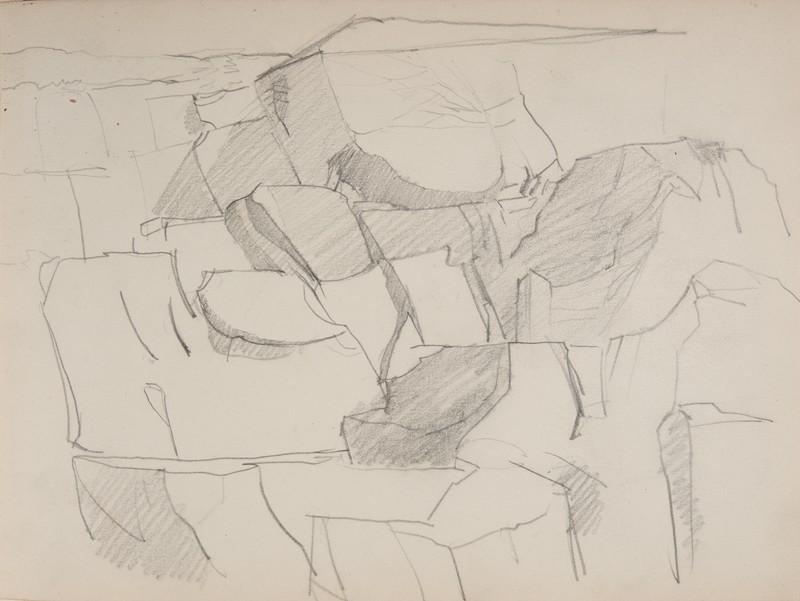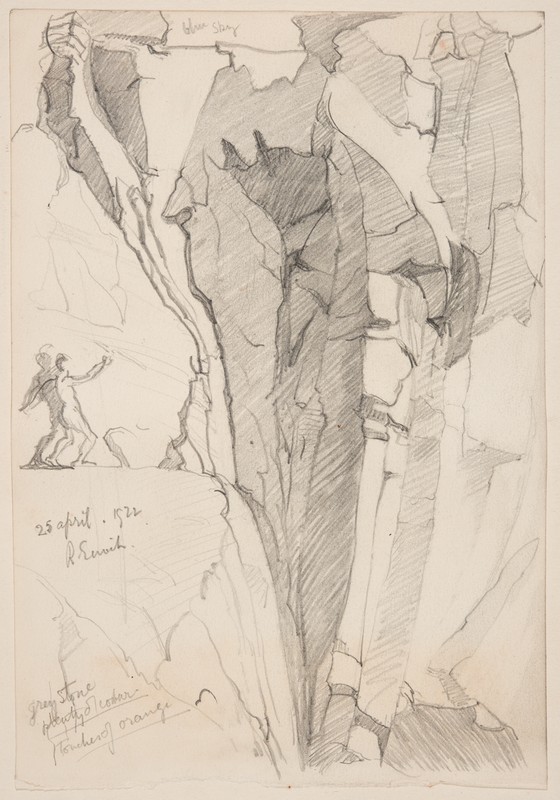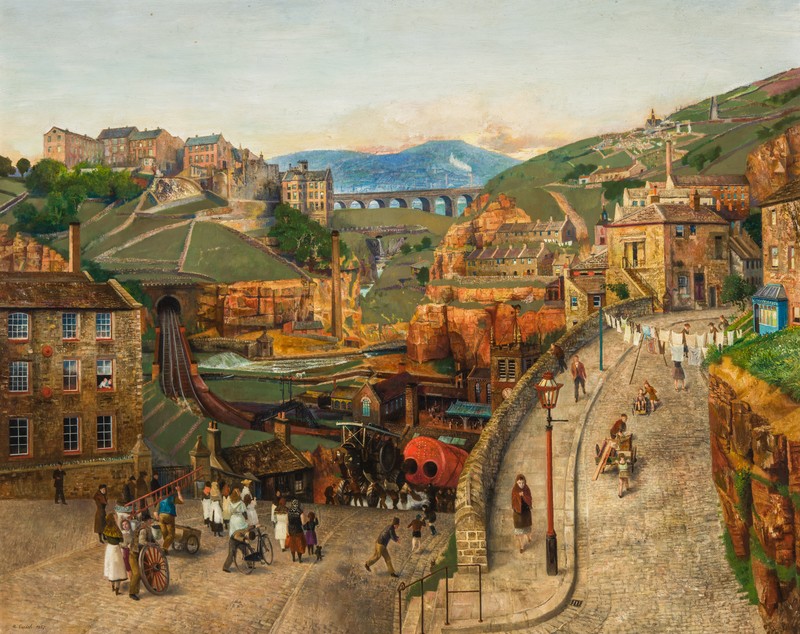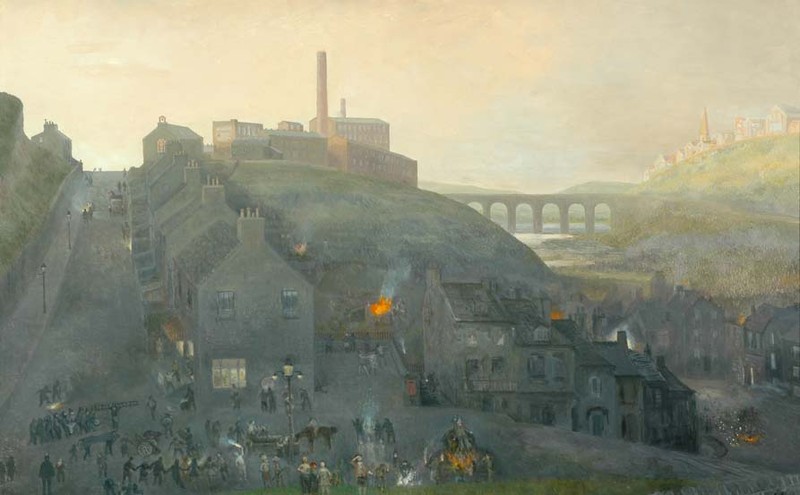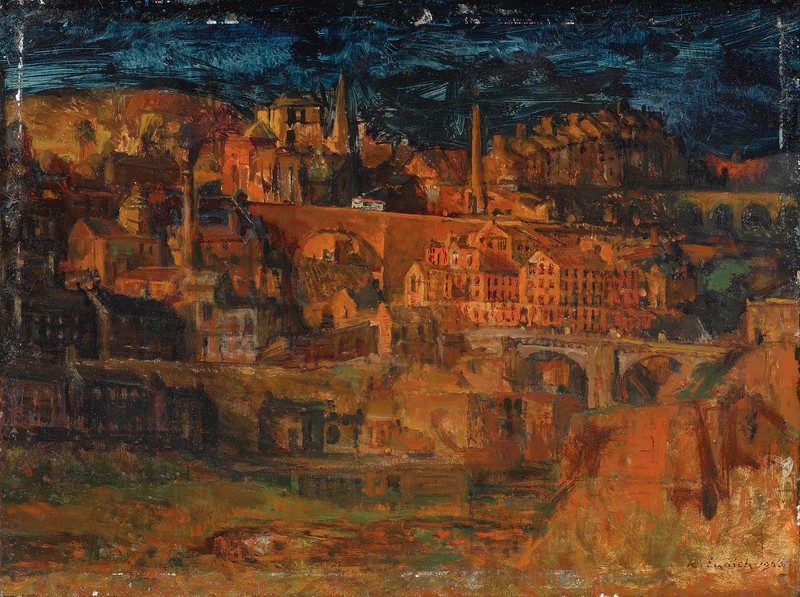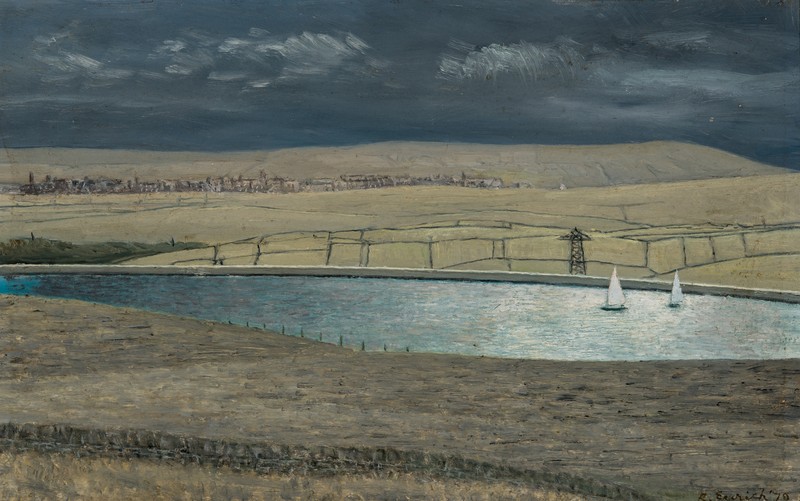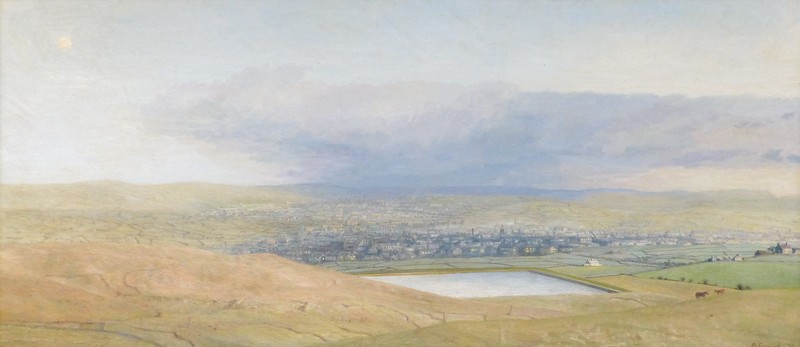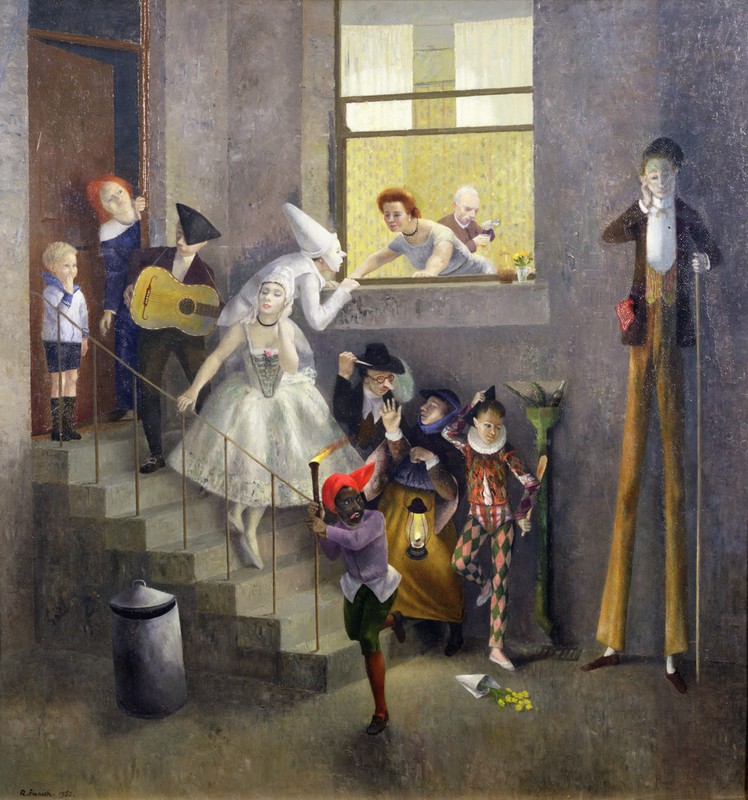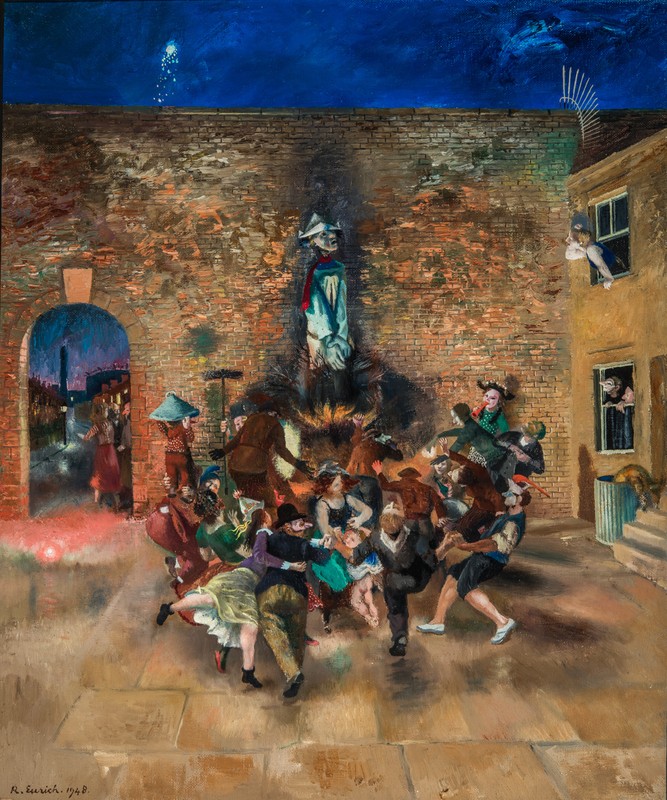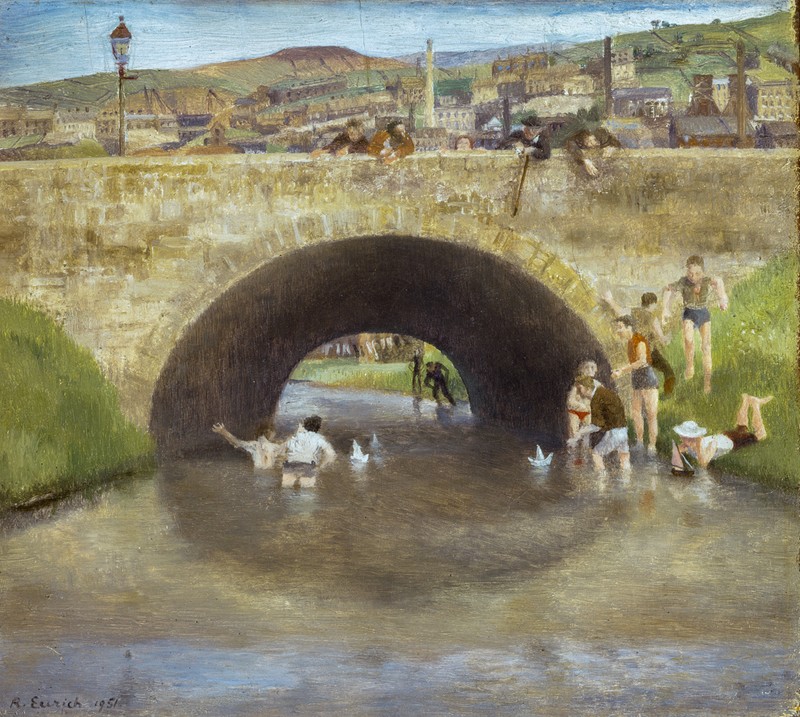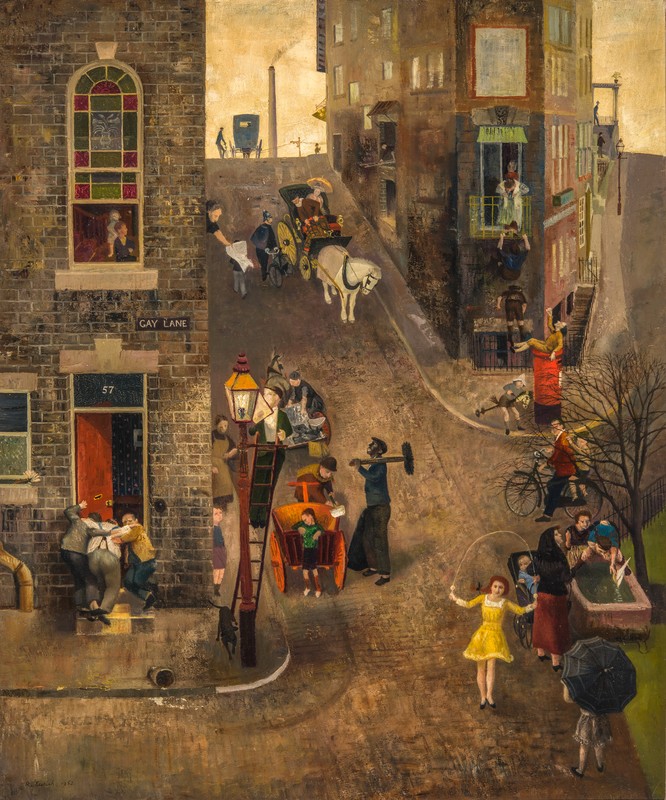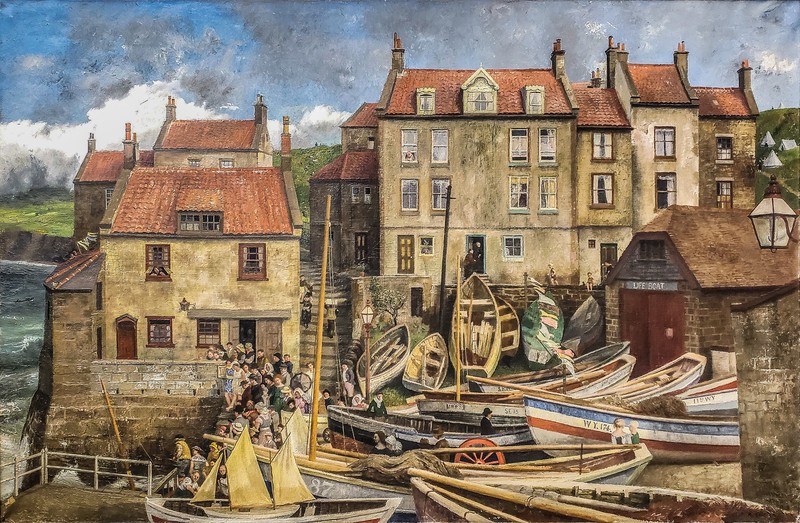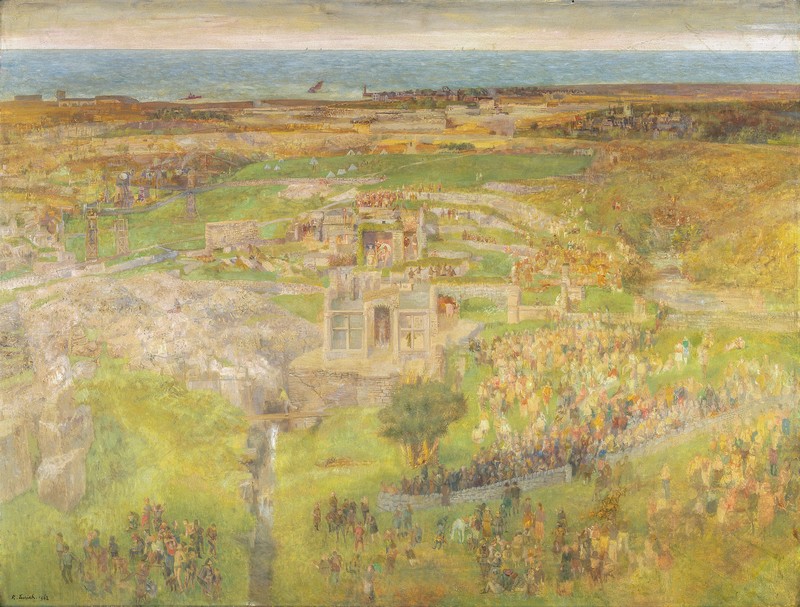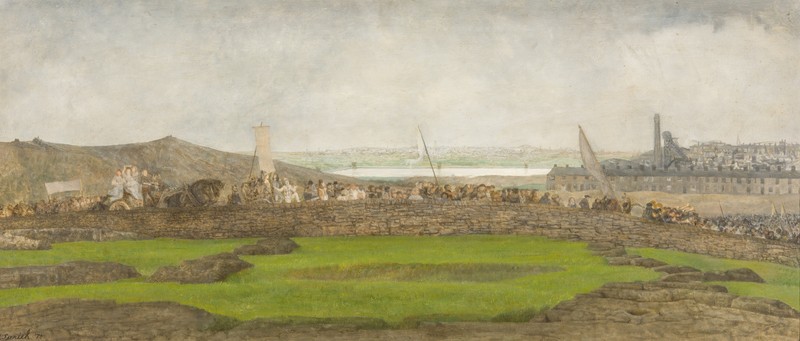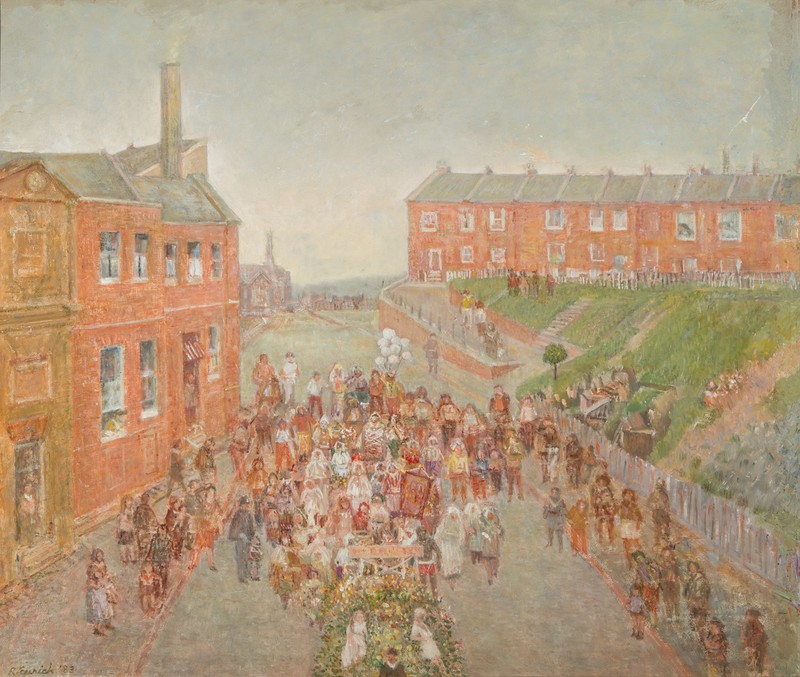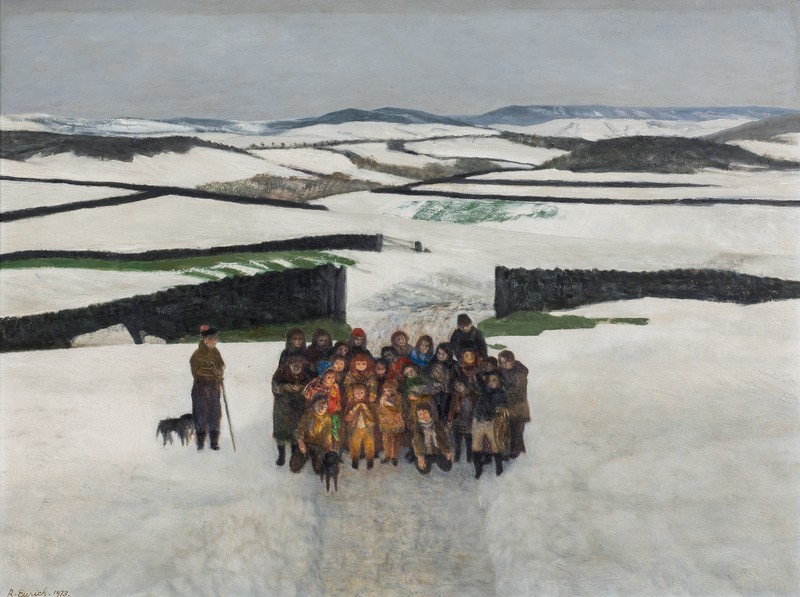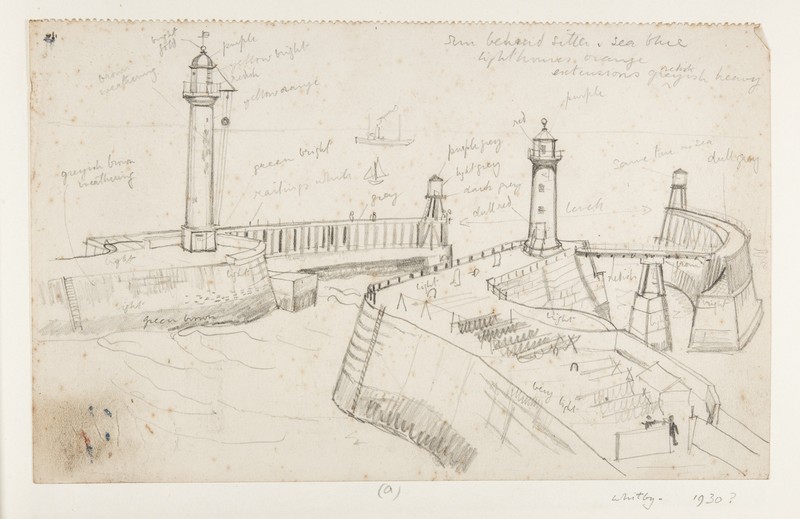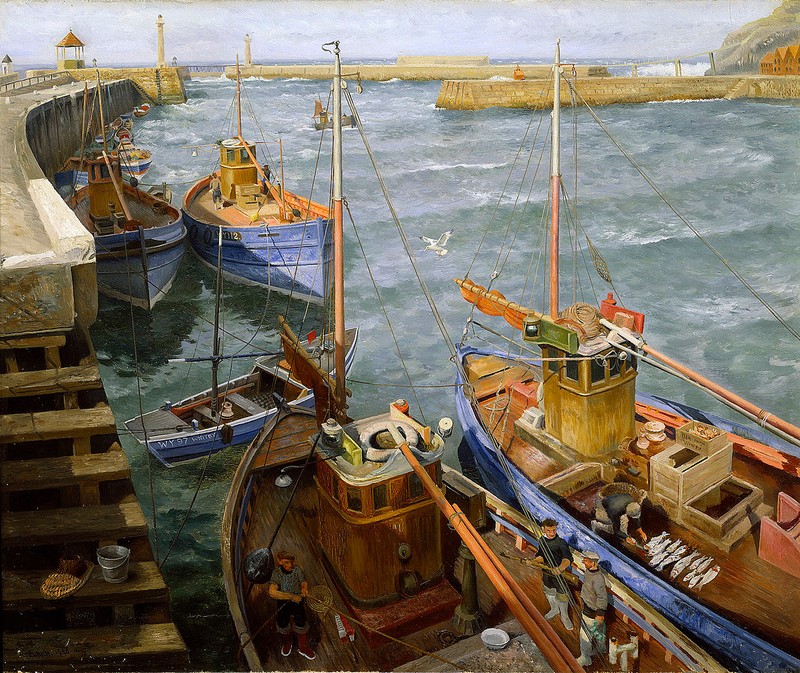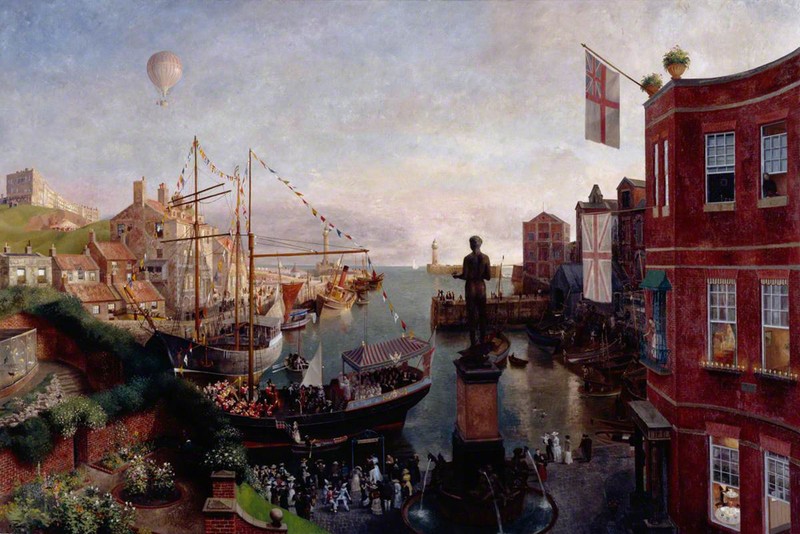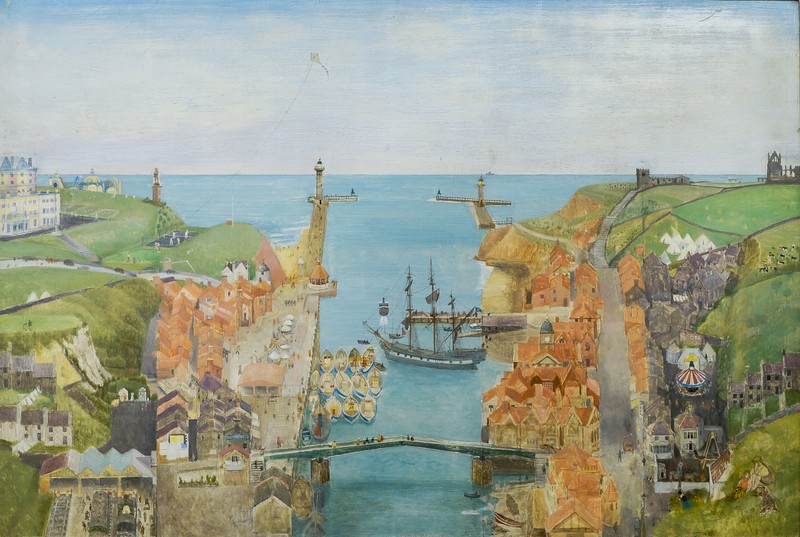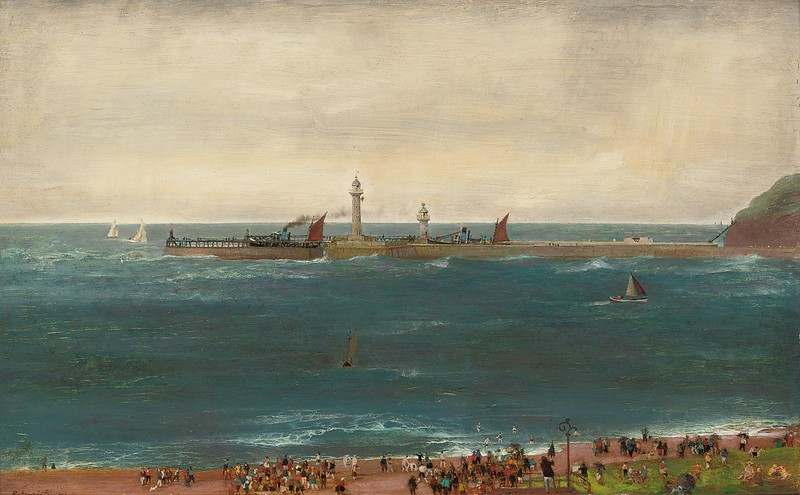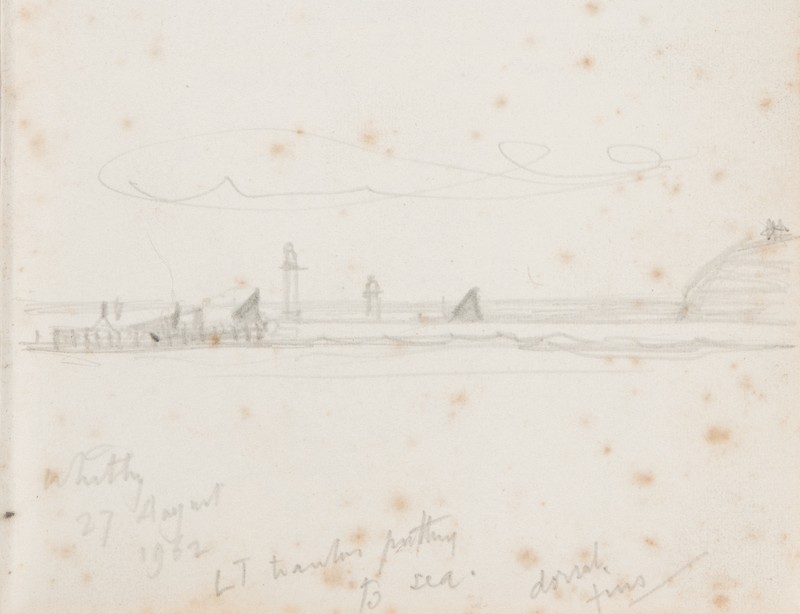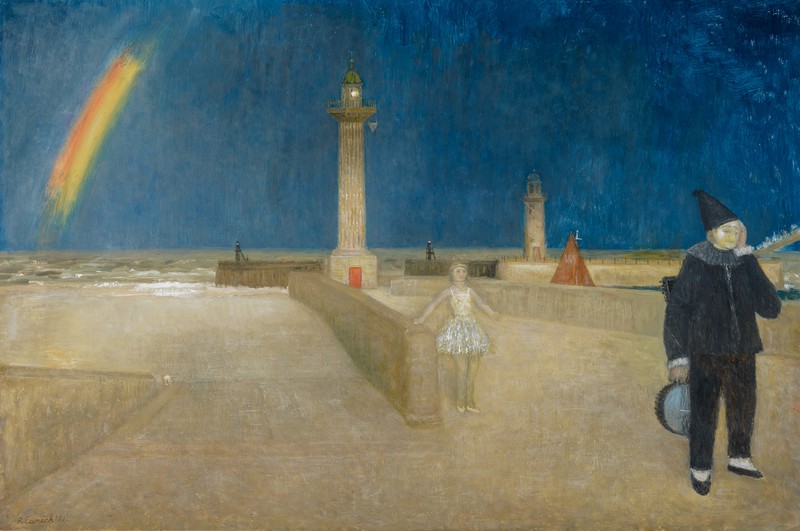Landscape
There, far below, is the knobbly backbone of England, the Pennine Range…for you are descending , somewhere about the middle of the range, where the high moorland thrusts itself between the woollen mills of Yorkshire and the cotton mills of Lancashire. Great winds blow over miles and miles of ling and bog…and the curlews still go crying in that empty air as they did before the Romans came…
J.B. Priestley The Good Companions (1929)
In his landscape works, Richard went far beyond more literal, topographical translations by using his prodigious memory to select what were for him the most visually charged elements of their composition: his combination of implausible viewpoints and perspectives and of heightened light and shade produced paintings of great drama and power. His subjects range from the dark sandstone and millstone grit of West Yorkshire, to the pale limestone of the Dales, capturing the county’s flat light and its drab hues, and celebrating its magnificent rock formations and wild moorland.
Early Watercolours
Richard’s bond with Yorkshire’s landscape can be dated from the moment the family left industrial Bradford for Ilkley in Wharfedale, some thirteen miles away, to better manage his mother’s tuberculosis. Aged 19, he was in his first year at Bradford School of Art & Design. A group of watercolours made in 1922, document his delight in discovering the moors around his new home, and the revelation of Turner, following a visit to see the large collection at Farnley Hall, Otley:
Turner became my hero … and I bought an old bicycle and explored Wharfedale, trying in many cases to locate the exact spot where he must have sat.
RE
Quarries and the Bronze Age Moor
Richard responded enthusiastically to the rocks and quarries surrounding his new Ilkley home, attracted by their blocky contours, their extremes of light and shade and intrigued by their antiquity. Quarries would be a subject that he would seek out when living in other parts of the country too. Recalling winter on Ilkley moor he wrote:
The colour of the rocks above our house assumed a richness undreamt of, the oranges and greens and deep purple under brilliant white with incredible blue shadows had to be painted.
RE
Gordale Scar and Malham Cove
Amongst many subsequent trips back to Yorkshire, a stay at Gordale in 1949 yielded drawings and notes for some fine landscapes. This magnificent canyon, hidden beneath craggy limestone cliffs where Gordale Beck gushes through a ravine, was the subject of two paintings. Richard describes the ascent up the slippery limestone…with footholds almost negligible …to the heart of Gordale Scar. When pondering how to capture Malham Cove – four miles or so from Gordale Scar, Richard’s diary again captures his meticulous approach to understanding his subject:
Spent all day wondering over the top of Malham Cove making notes of the construction and wondering how to paint it…..had the most frightening sensation of being sucked in, and retreated at once.
RE
Drystone Walls
Richard’s fascination with the way the bony structures of Yorkshire’s drystone walls make distinctive patterns across its moors and pastures can be seen in a group of smaller scale works – subjects in their own right - made during the 1970s and ‘80s. Some show the silver grey limestone of North Yorkshire and the Dales, others the gritty sandstone of West Yorkshire and lower Wharfedale.
